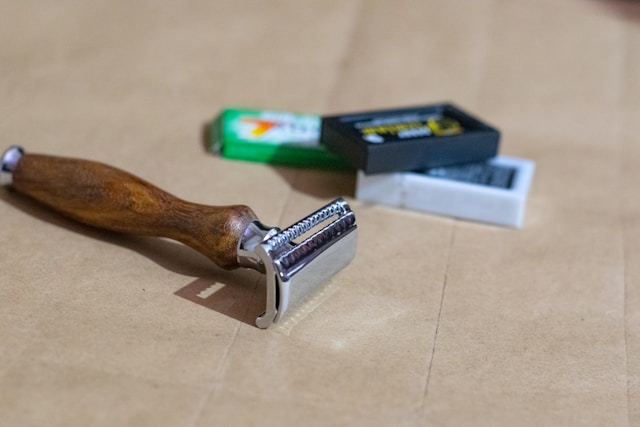A captive product pricing strategy involves pricing the main product at a relatively low cost while setting higher prices on the complementary or accessory products that are necessary for the main product to function. This strategy is commonly used to create a continuous revenue stream from customers who have already purchased the main product. Here’s a detailed breakdown:
Key Components
- Core Product: This is the primary product that customers need or want. It is often priced competitively or even at a loss to attract buyers. Examples include printers, gaming consoles, or razors.
- Captive Products: These are the complementary products required to use the core product. They typically have a higher profit margin. Examples include printer ink, gaming software, or razor blades.
Objectives
- Customer Acquisition: By offering the core product at an attractive price, companies aim to increase their customer base.
- Revenue Maximization: The high margins on captive products help to maximize the overall revenue and profit from each customer.
- Customer Lock-in: Once customers have invested in the core product, they are more likely to continue purchasing the captive products, creating a loyal customer base.
Implementation Steps
- Identify the Core and Captive Products: Clearly define the main product and its necessary accessories or consumables.
- Competitive Pricing for Core Product: Set a competitive price for the core product to attract a large customer base.
- Premium Pricing for Captive Products: Set higher prices for the captive products to ensure a steady revenue stream.
- Bundle Offers: Create bundles that include the core product and a few captive products at a discounted rate to encourage initial purchases.
- Marketing and Promotion: Focus marketing efforts on the low cost of the core product while subtly highlighting the necessity of the captive products.
- Customer Support and Satisfaction: Ensure high-quality customer service to maintain satisfaction and encourage repeat purchases of captive products.
Advantages
- Increased Market Penetration: Lower prices on core products can lead to higher sales volume.
- Stable Revenue Stream: The ongoing need for captive products ensures continuous revenue.
- Customer Loyalty: Once customers are invested in the core product, they are likelier to remain loyal and continue purchasing the necessary accessories or consumables.
Challenges
- Consumer Perception: Consumers may perceive the strategy as a “bait and switch” if not managed carefully.
- Competitive Response: Competitors may adopt similar strategies, potentially leading to price wars.
- Dependency on Captive Products: The success of this strategy is heavily reliant on the continuous need and purchase of captive products.
Conclusion
Captive product pricing is a strategic approach to maximize revenue and profit by leveraging the ongoing need for complementary products. When implemented effectively, it can lead to increased customer acquisition, loyalty, and a steady revenue stream. However, careful management is required to ensure customer satisfaction and navigate competitive pressures.
Examples of Captive Product Pricing Strategy
Here are several examples of captive product pricing strategies in different industries:
- Printers and Ink Cartridges
- Core Product: Printers are often sold at a low cost, sometimes even below cost, to attract customers.
- Captive Products: Ink cartridges and toner refills are necessary for the printer to function and are sold at a higher price, providing ongoing revenue.
- Gaming Consoles and Games
- Core Product: Gaming consoles, such as PlayStation, Xbox, or Nintendo Switch, are sold at a relatively low price.
- Captive Products: Video games, downloadable content (DLC), and accessories like controllers and headsets are sold at higher prices, creating additional revenue streams.
- Razors and Blades
- Core Product: Razor handles are sold cheaply or given away for free.
- Captive Products: Replacement razor blades, which must be purchased regularly, are sold at a higher price.
- Mobile Phones and Accessories
- Core Product: Mobile phones are often sold with subsidies or competitive prices.
- Captive Products: Accessories such as cases, chargers, headphones, and specialized apps or services are sold at higher prices.
- Coffee Machines and Pods
- Core Product: Coffee machines, especially single-serve ones like Keurig or Nespresso, are sold at relatively low prices.
- Captive Products: Coffee pods or capsules required to make coffee are sold at premium prices.
- Video Streaming Devices and Subscriptions
- Core Product: Streaming devices like Roku, Amazon Fire Stick, or Apple TV are sold at affordable prices.
- Captive Products: Monthly subscriptions to streaming services (e.g., Netflix, Amazon Prime, Hulu) are necessary to access content and come with ongoing fees.
- Electric Toothbrushes and Brush Heads
- Core Product: Electric toothbrushes are often sold at a competitive price.
- Captive Products: Replacement brush heads, which need to be changed periodically, are sold at a premium.
- Software and Updates
- Core Product: Certain software programs may be offered at a low initial cost or even for free.
- Captive Products: Updates, premium features, or add-ons that enhance the software’s functionality are sold at higher prices.
- Cameras and Lenses
- Core Product: Cameras, especially digital SLRs or mirrorless cameras, are sold at competitive prices.
- Captive Products: Lenses, memory cards, and other essential accessories are sold at higher prices.
- Electric Vehicles and Charging Stations
- Core Product: Electric vehicles (EVs) can be priced competitively.
- Captive Products: Charging stations, whether at home or in public locations, and maintenance services provide ongoing revenue.
Summary
The captive product pricing strategy is widely used across various industries to ensure a continuous revenue stream from customers who have already invested in the core product. Companies can maximize their profitability and foster customer loyalty by pricing the main product attractively and setting higher prices for necessary accessories or consumables.










